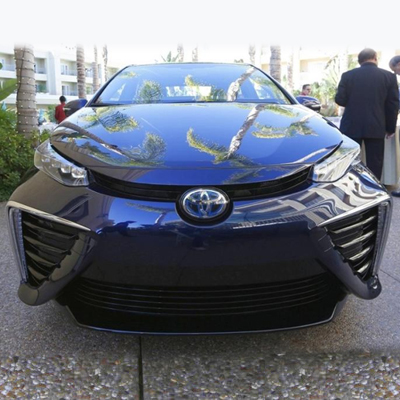Electrifying Your Fleet: Navigating the Rise of Electric and Hybrid Vehicles in Commercial Operations

Introduction:
The automotive sector is undergoing a notable shift with the increasing prominence of electric and hybrid vehicles. Businesses, aiming for sustainable and cost-effective solutions, are strategically integrating these environmentally friendly options into their commercial fleets. This article investigates the various benefits that businesses can derive from the adoption of electric and hybrid vehicles, covering aspects like cost-effectiveness, environmental impact, and the evolving regulatory landscape.
Cost Savings and Total Cost of Ownership (TCO):
The transition to electric and hybrid vehicles necessitates a nuanced evaluation of costs to unveil the long-term advantages for businesses. Initially, the upfront investment in electric and hybrid vehicles may appear higher compared to their traditional counterparts. However, this initial cost discrepancy is offset by substantial long-term savings. The Total Cost of Ownership (TCO) analysis is crucial in this context, encompassing factors beyond the purchase price. Maintenance costs for electric and hybrid vehicles are notably lower due to fewer moving parts and reduced wear and tear. Moreover, the savings in fuel costs, often a significant portion of traditional fleet expenditures, contribute significantly to the TCO advantage. Businesses can also tap into government incentives, tax credits, and grants that further alleviate the financial burden and accelerate the return on investment. Consequently, a comprehensive assessment considering both upfront costs and long-term savings demonstrates the compelling economic viability of integrating electric and hybrid vehicles into commercial fleets.
| Also Read: Electrification Drive: Advancements and Challenges in Electric Vehicles |
Environmental Impact and Corporate Social Responsibility (CSR):
The adoption of electric and hybrid fleets represents a pivotal stride towards corporate environmental responsibility and sustainability, yielding a substantial reduction in carbon footprints. These vehicles contribute significantly to lower emissions, aligning seamlessly with businesses' sustainability goals. By replacing traditional combustion engines with cleaner, more efficient alternatives, companies actively participate in the global commitment to combat climate change. Beyond the environmental impact, integrating electric and hybrid vehicles into commercial fleets provides a unique avenue for businesses to bolster their corporate image and enhance Corporate Social Responsibility (CSR).
Embracing environmentally conscious practices not only demonstrates a commitment to reducing ecological impact but also positions companies as socially responsible entities. This alignment with CSR principles can enhance brand image, fostering a positive reputation among customers who increasingly value and prioritize sustainability in their consumption choices. Ultimately, the integration of electric and hybrid fleets becomes a strategic and tangible expression of a company's dedication to both environmental stewardship and corporate citizenship.
Regulatory Considerations and Incentives:
Navigating the landscape of electric and hybrid fleets involves a nuanced understanding of global and regional regulations that incentivize their adoption in commercial operations. Governments worldwide are increasingly recognizing the environmental benefits of transitioning to greener transportation solutions. By examining the diverse regulatory frameworks in different regions, businesses can gain insights into the specific incentives designed to promote the integration of electric and hybrid vehicles into commercial fleets.
From tax credits to grants and various financial benefits, governments are actively encouraging companies to embrace sustainable transportation alternatives. These incentives not only alleviate the initial financial burden of transitioning but also contribute to the overall cost-effectiveness of operating electric and hybrid fleets. As businesses strategically align with these regulatory measures, they not only position themselves as compliant with evolving environmental standards but also capitalize on financial incentives that make the shift towards greener fleets a pragmatic and economically viable choice.
Charging Infrastructure and Range Anxiety:
The successful integration of electric and hybrid vehicles into commercial fleets hinges on two critical considerations: the state of charging infrastructure and strategies to address range anxiety. An essential component of this transition is a comprehensive assessment of the existing charging infrastructure. Robust charging networks are pivotal for the seamless operation of commercial fleets, ensuring that vehicles can be charged efficiently and minimizing downtime. Recognizing the importance of charging infrastructure as a foundational element in the adoption of electric and hybrid vehicles, businesses must invest in and collaborate on the development of widespread and reliable charging solutions.
Moreover, addressing range anxiety is paramount for the widespread acceptance of electric and hybrid fleets. Businesses can employ strategic measures to alleviate concerns related to vehicle range. This may include the strategic placement of charging stations along frequently traveled routes, implementing smart fleet management systems that optimize route planning based on charging infrastructure availability and educating drivers about the capabilities of electric vehicles. By proactively tackling range anxiety, businesses can instill confidence in their fleet operations, ensuring that electric and hybrid vehicles seamlessly meet the demands of commercial use while contributing to a sustainable and efficient transportation ecosystem.
Technology Advancements and Fleet Management Solutions:
The landscape of electric and hybrid fleets is continually evolving, driven by notable advancements in electric vehicle (EV) technology. These innovations focus on enhancing efficiency, performance, and overall reliability. From breakthroughs in battery technology increasing range to improvements in electric motor efficiency, these advancements collectively contribute to making electric and hybrid vehicles more viable and attractive for commercial fleets.
Accompanying the progress in technology are advanced fleet management solutions specifically crafted for electric and hybrid fleets. These sophisticated software tools and data analytics streamline fleet operations, offering immediate insights into vehicle performance, charging status, and maintenance requirements. This not only boosts efficiency but also results in significant cuts in operational costs. By utilizing data-driven insights, businesses can strategically schedule charging, predict maintenance needs, and optimize vehicle utilization. With ongoing technological advancements in both electric vehicle design and fleet management solutions, businesses are on the verge of unlocking enhanced efficiency and cost-effectiveness in their sustainable transportation initiatives.
Conclusion: As the automotive industry propels towards sustainable practices, incorporating electric and hybrid vehicles into commercial fleets is now a strategic necessity rather than an option. Beyond cost savings, businesses can establish themselves as responsible corporate entities. By adeptly navigating regulations, embracing cutting-edge technologies, and drawing insights from successful case studies, companies can chart a course toward a more eco-friendly and efficient future in commercial transportation.



